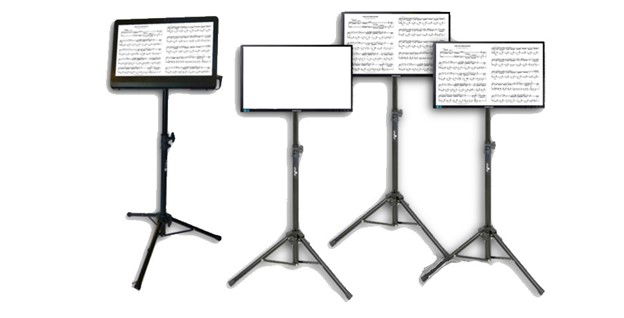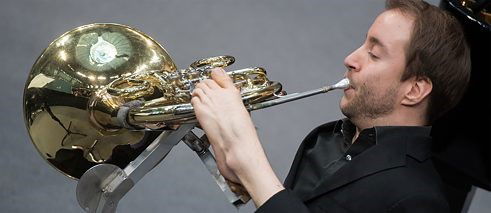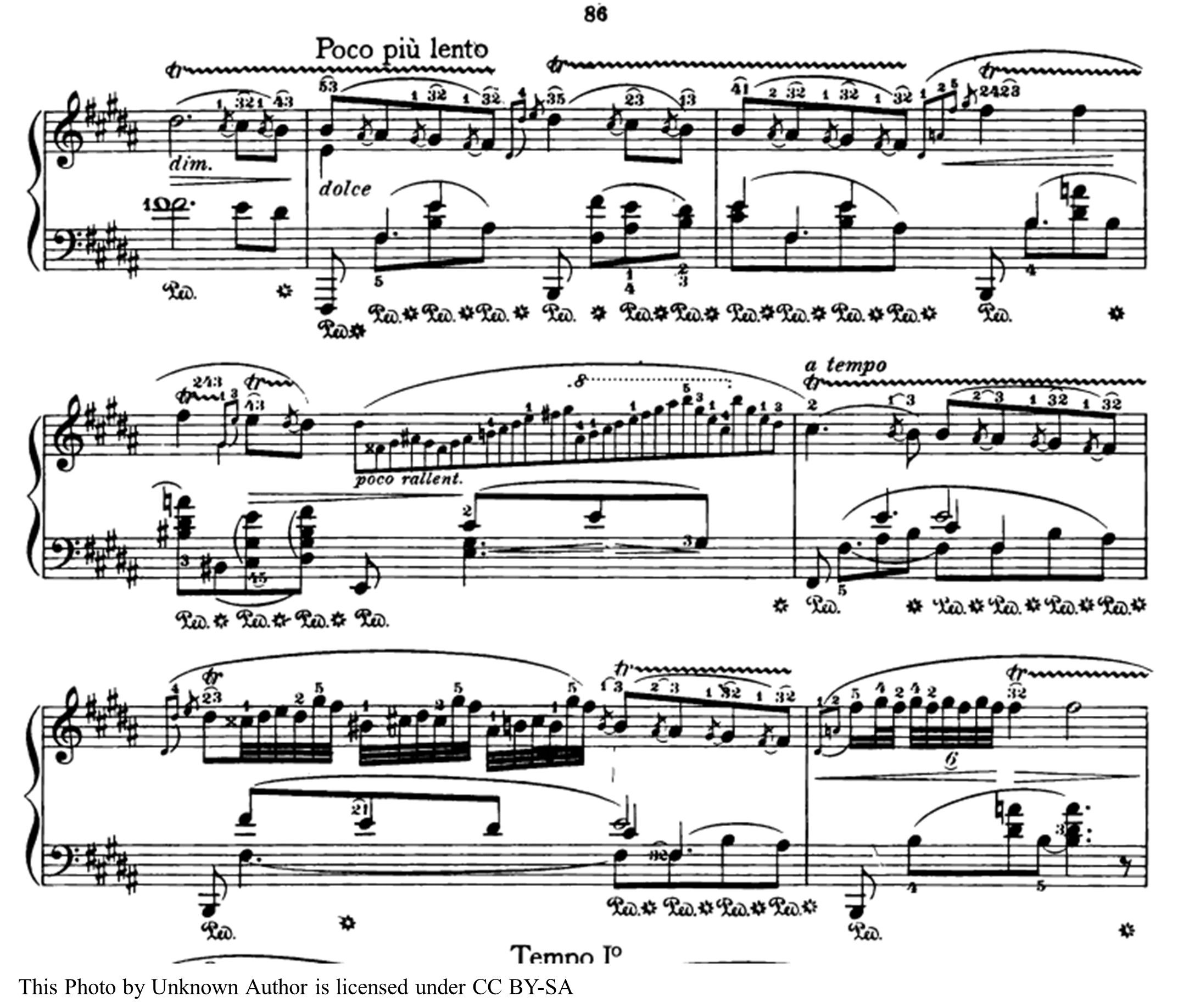How to Make Sure Your Band Has Enough Parts

A Personal Story to Start. I have been transposing by sight for decades. The most common occurrence is when I play my trumpet in church from music in a hymnal. It’s simply played a whole step up. I have a friend who plays tenor sax and has done this for so long that he can’t comfortable play music written for the sax.
However, my most challenging assignment was to play the French horn (tuned in F) from second trumpet music (tuned in Bb). For a while, my brain tried to transpose up a whole step as I usually would for trumpet, but I final had to imagine that I was playing from my own personally created clef.

Now, the article begins
Most concert band members, especially of high school age, aren’t that proficient at transposing by sight, even from just one part to another. So, it can be quite a predicament if your concert band score doesn't have enough parts for the entire band. However, it's not a total disaster if you learn to approach this situation with a constructive mindset, seeking solutions that ensure a good performance while respecting the integrity of the composition. In this article, we will explore various strategies and considerations for addressing this issue.
There are a number of ways that music can be “missing”. It may be that you have the conductor’s score and all of the parts except for one or two. The worst thing that you might have to do is hand copy the part. This would not be a violation of copyright. You already had bought the part.
It may be that the score you purchased doesn’t have a part for an instrument in your band. This article primarily addresses that dilemma. Sometimes on instrument can substitute for another, but you have to be careful when doing that. Here’s why and how to decide what to do.
* Understand the Composition:
The first step in dealing with an incomplete concert band score is to thoroughly understand the composition. This includes studying the instrumentation, dynamics, and any solo or featured parts. By doing so, you can identify the essential elements of the piece and determine which parts are crucial for maintaining its integrity.
Is the incomplete piece a march, a tone poem, a Christmas piece or a bit of avant-garde? If there is a featured section, or even a solo, that doesn’t have a part for the instrument that you consider for playing that section, you’ll need to determine what the overall sound of the piece or section is. This will be a good first step in deciding what you can do next.

Assess the Available Musicians:
Next, it’s important that you assess the musicians available to perform the piece. Consider the instrumentation of your band and the skills of your members. Are there any musicians who can double on different instruments? Are there skilled soloists who can take on prominent parts? If you’ve had some of your players for a while, that will be a relatively easy task. If not, you can use these suggestions for evaluating the skill abilities of your musicians. This can be done for the whole band, or just for those whom you are considering to play the missing part.
These methods can be used if you need a more comprehensive assessment, and would include technical proficiency, sight-reading abilities, and prepared repertoire. However, they easily can be modified so that you can look for only those qualities that are needed. For a truly objective evaluation, these should be conducted blindly. Here are two suggested methods:
The first one is conducted in a way similar to the way a professional music ensemble would choose its players and leaders. This would work in larger bands. It would also have to be performed in such a way as to foster healthy competition and recognition of accomplishment rather than encouraging the wrong kind of pride and reinforcing a shame culture.
- Each of the musicians who might play the part(s) chooses a number, randomly drawn.
- Each one then performs a prescribed set of pieces behind a screen so that the director can hear, but not see the player. The set of pieces should include a prepared piece chosen by the director, and the same for all musicians. It would include all of the technical skills required for that part.
- Each one would also perform a piece not seen before to test sight reading skills.
The second one may prove a little more difficult but, in the end, it may be better, especially in a smaller or less mature band, to choose musicians while lessening the danger of hurting the feelings of, or undermining the confidence of the musicians. In this one, the director is using a more covert method.
- During a regular rehearsal, the director asks to hear each instrument section play a part of a well-rehearsed tune. The director can say that he or she is investigating something, which is the truth, and not to be bothered as he or she wanders around among them.
- While each section plays, the director does what was described and wanders among the players, listening, critiquing and making note, mentally or on paper.
- The same process can then be used with a piece that the band has never played before, perhaps one that the director is considering using. That way, the director can analyze the players’ sight reading skills and see if the piece is one that they might like to play.
From either method, the director can then determine who would be the best candidate for the part in question.
* Reassign and Double Parts:
One common solution to the problem of missing parts is to reassign and double existing parts. This involves having some musicians play the same music simultaneously, essentially doubling up on certain instruments. For example, if the score lacks a baritone saxophone part, a tenor saxophonist could be assigned to play it. Or, if the original score calls for a trumpet in Bb, but you have a Euphonium player who can handle it in concert pitch (C), you can have them play that part.
This can involve some transposition. Transposing parts can be a useful technique, especially if you have versatile musicians.. Just ensure that everyone is aware of the transpositions to avoid confusion.
Some switching of parts isn’t very difficult. Trumpet, cornet, fluegelhorn, French horn, mellophone and baritone (Treble Clef) horns can all switch around if need be. Even though they may be tuned in different keys, the fingering is the same. The tuba and baritone (Bass Clef) are in bass clef and their fingering is one whole step different than the other instruments mentioned, which are all in treble clef. A Bb for instruments in the treble clef requires the first valve to be pushed; for instruments in the bass clef, the same note has no valves pressed.
Other transpositions are a bit trickier. Woodwinds are generally in Bb or Eb, so if you can have an instrument in Bb, like a clarinet, soprano or tenor saxophone, they can more easily fill in for other Bb instruments. On the other hand, alto and baritone saxophones are in Eb and would prefer reading each other’s music since there aren’t any other instruments commonly in use.
There are some instruments in other keys. Any alternate music would have to be played by someone familiar with the different keys and able to either rewrite the music or transpose by sight.
For more information about transposing between instruments, see my blog article Help for Transposing Between Instruments.

* Arrange or Adapt the Score:
In some cases, you might need to create your own arrangements or adaptations of the score. This can involve simplifying complex passages, redistributing melodies, or composing additional parts to fill the gaps. While this requires musical expertise, it allows for a customized solution that suits your ensemble's needs.
By all means, be sure to check to see if such arrangement or adaptation is allowed by the composer, original arranger or copyright holder. They have worked hard to get the music to sound the way they want. If you are conducting a high school concert band, they will often allow, at no charge, such arrangements or adaptations if it only involves doubling a few parts.
At Salt Cellar Creations, if you need more parts, we will be glad to add them at no charge, unless some rare and unusual situation occurs (such as a part for some medieval double reed horn). There may be a restriction for copyrighted material, but that would be rare.
* Utilize Auxiliary Instruments:
Don't forget about your auxiliary instruments like marimbas, xylophones, or even keyboards, which can provide missing harmonies or melodies.
Most modern keyboards have a plethora of instrument sounds. In dire situations, it may be necessary to have the keyboardist imitate an instrument or two.
If any of those instruments normally aren’t heard very prominently, it may be necessary to amplify their sound with a microphone or direct connection and an amplifier. This set-up could be self-contained, that is, the amplifier could be located near the instrument. Or, it could be part of the house sound system.
* Collaborate with Other Ensembles: If you're part of a larger music program or have connections with other ensembles, consider collaborating. Borrowing musicians from other groups for a specific performance can be a creative solution to fill in gaps and create a unique musical experience. Once again, be sure that you aren’t breaking any copyright laws. Borrowing may be allowed, but copying is probably illegal. A simple definition of copyright infringement is the prevention of a sale. If the music is for sale, you need to buy it. Otherwise, you are depriving a (starving) musician of part of his or her income.
* Consult with the Composer or Arranger:
If possible, reach out to the composer or arranger of the piece. They might be willing to provide guidance or even create custom parts for your ensemble. Communication is key, and composers often appreciate the opportunity to support live performances of their work.
Again, at Salt Cellar Creations, if you need more parts, we will be glad to add them at little or no charge.
* Maintain Artistic Integrity:
Throughout this process, it's crucial to maintain the artistic integrity of the composition. While adjustments may be necessary, strive to preserve the essence and intent of the music. Ensure that any changes you make are in line with the composer's style and vision. For example, don’t use a set of tubular bells to replace a trumpet part, or an oboe for a tuba part. These are extreme examples, but you get the idea.
* Rehearse Diligently:
Once you've resolved the issue of missing parts and made necessary adjustments, dedicate ample time to rehearsal. Ensure that all musicians are comfortable with their new roles and that the ensemble gels as a cohesive unit. Practice and communication are vital for a successful performance.
In conclusion, encountering a concert band score with insufficient parts can be a challenge, but it's also an opportunity for creativity and resourcefulness. By understanding the composition, assessing your musicians, and considering the various strategies outlined above, you can overcome this obstacle and deliver a memorable musical performance that honors the spirit of the music. Remember, the show must go on, and with the right approach, it can be a resounding success.
At Salt Cellar Creations, we try to provide an assortment of music for Concert Bands of different sizes and configurations. We can adapt any music that we’ve written or arranged to fit your needs, usually at no cost, unless there is some unusual circumstance. Find out more about what Salt Cellar Creations has to offer for Concert Bands HERE. Explore the available music HERE.
SCC can also compose an original piece for you or do a custom arrangement for you. There are two ways that this can be done; one is much more affordable than the other. And SCC is always looking for ideas of pieces to arrange or suggestions for original pieces.
We have sold music not only in the US but in Canada, the United Kingdom, France, Australia, New Zealand and Austria. Please visit the WEBSITE or CONTACT US to let us know what we can do for you!